Book Cover Artwork: Paisley’s bid for City of Culture 2021.
Referencing the geology surrounding the White Cart River which forms the foundations of Paisley’s embroidery and thread mills, now repurposed. One of which houses my art studio.
© Jane Hunter 2013-2025
Book Cover Artwork: Paisley’s bid for City of Culture 2021.
Referencing the geology surrounding the White Cart River which forms the foundations of Paisley’s embroidery and thread mills, now repurposed. One of which houses my art studio.
Textile art commission for the VIP Lounge in Isle of Raasay Distillery. The first legal distillery on the island of Raasay.

Photograph courtesy of Anne Hunter Interiors.
When I began my research for this work it soon became clear that this was a very special project. Spirit had been distilled here illicitly for generations, but this would be the first legal distillery on the island.
The Hebridean isle of Raasay lies off the east coast of Skye. Just 14 miles long and 3 miles wide (at its widest point), this is a small island with a tremendously rich history.
The topography and geology is unrivalled in its beauty, character and complexity. A landscape formed by ancient Lewisian Gneiss to the north with Torridonian Sandstone, igneous lavas and granite to the south.

A once thriving crofting community of around 900, sadly a victim of the Highland clearances, the population of Raasay now stands at 161 (according to the last census). A history best captured perhaps by one of the most significant Scottish poets of the 20th century, Raasay born Sorley MacLean in his poem Hallaig. You can hear Sorley read his poem here in the song of the same name, by the incredible and deeply missed young Scottish musician Martyn Bennett.
The story behind the new distillery is inspiring, deeply rooted in the place, the landscape and the community. From the mineral rich water which flows over the volcanic rock, down through the sedimentary to an ancient well on site; the local peat and plans to grow their own barley on the island; the re-use of stone and wood from the site in the building itself, to the employment and involvement of many in the community.

Of course I had to make the trip to Raasay to explore the landscape and have look around the, almost completed, distillery! We were met by Visitor Experience Manager, singer and writer, Iain Hector Ross on the ferry from Sconser. Iain very generously gave us not only a tour of the distillery but also of the island, telling us lots about the history of the place.

The key locations explored in the artwork include the area where the distillery is situated, with the 19th century Victorian villa Borodale House at its heart, the Broch at Dun Borodale and the distinctive flat-topped volcanic summit of Dun Caan.
The colour palette is, as always, directly inspired by the landscape. The many shades of green, brown and rust we experienced during our autumn visit to the 'island of the red deer'. The incredible rich blues and greens in the view from the distillery windows across the sound to the mountains of Skye - quite possibly the best view from any distillery in Scotland.




Isle of Raasay Distillery is now open to the public for tours and the stunning accommodation available to book, where you'll find my work hanging in the beautiful executive bar & lounge and in one of the luxurious bedrooms.


Thank you to Isle of Raasay Distillery and Anne Hunter Interiors for commissioning me for this project. The building itself is just beautiful, a perfect combination of historical and contemporary architecture, with interiors brought back to life through sympathetic restoration and a modern Scottish vision. The result is a stunning place to visit and spend time in.
I'm grateful to have had the opportunity to play a small part in this project and wish the distillery and community all the very best for its success.

For the re-opening of Irvine Townhouse to the public.
Commissioned by North Ayrshire Council.
Townscape, bordered by sea, bisected by river, combined with the inward and outward migration of significant historical figures who helped shape the town.




When I was commissioned to create a piece of artwork to hang in the newly restored Irvine Townhouse, I took a slightly different approach than to my previous work. In addition to researching the physical shapes and make up of the landscape, I also looked to the human history of the town to create a map which speaks of the people as well as the landscape.
The development project integrating the historic Townhouse and the new modern Portal leisure facility, references a link between the old and the new in it’s concept and architecture. This link is strong in Irvine. Designated one of Scotland’s ‘New Towns’ in 1966, to improve housing and employment, Irvine has in fact been settled since the 12th century and was given Burgh status in 1140. The River Irvine played a large part in the success of the town with the port being the third largest in Scotland up until the 18th century. Many local industries, mills, shipbuilding, export and engineering, thrived here until the mid 20th century.
I felt the river should be the starting point for my artwork, the focal point from which the town has grown. Cutting the shapes of the landscape from Harris Tweed, a cloth with a history and heritage of its own, following the twists and turns of the river flowing through the town. Embroidering the streets, I thought about the people who have lived, worked and travelled through this place. There are many famous names associated with Irvine and I discovered that each room in the Townhouse has been named after one of these people. Scotland’s national bard Robert Burns, poetess Jean Kelly, Christian poet and hymn writer James Montgomery, author and entrepreneur John Galt, businessman and philanthropist John Ferguson, Ross Tollerton and Captain Harry Sherwood Ranken both recipients of the Victoria Cross. On reading further I learned of the global reach from Irvine through just these seven individuals. Careers, lives and achievements that stretch from the town to many other parts of Scotland, France, Canada, South Africa, New York and Asia, to name a few.
I have represented each person on the map with a different coloured thread, rooted in Irvine but reaching, stretching and connecting around the globe. The colour palette I chose for the threads in the map takes inspiration from the original mosaic floor at the entrance to the Townhouse, shades of blue, yellow, russet, and white. Striking against the contemporary grey blue tweed, a palette drawn from the silver birch and waters of the river.
I hope to achieve in this artwork a feeling of history and heritage, the cloth, craftsmanship and story, within a dynamic contemporary image. Celebrating the joining together of the old and the new.
Artwork and essay focussing on the geology of the Scottish island of Islay.



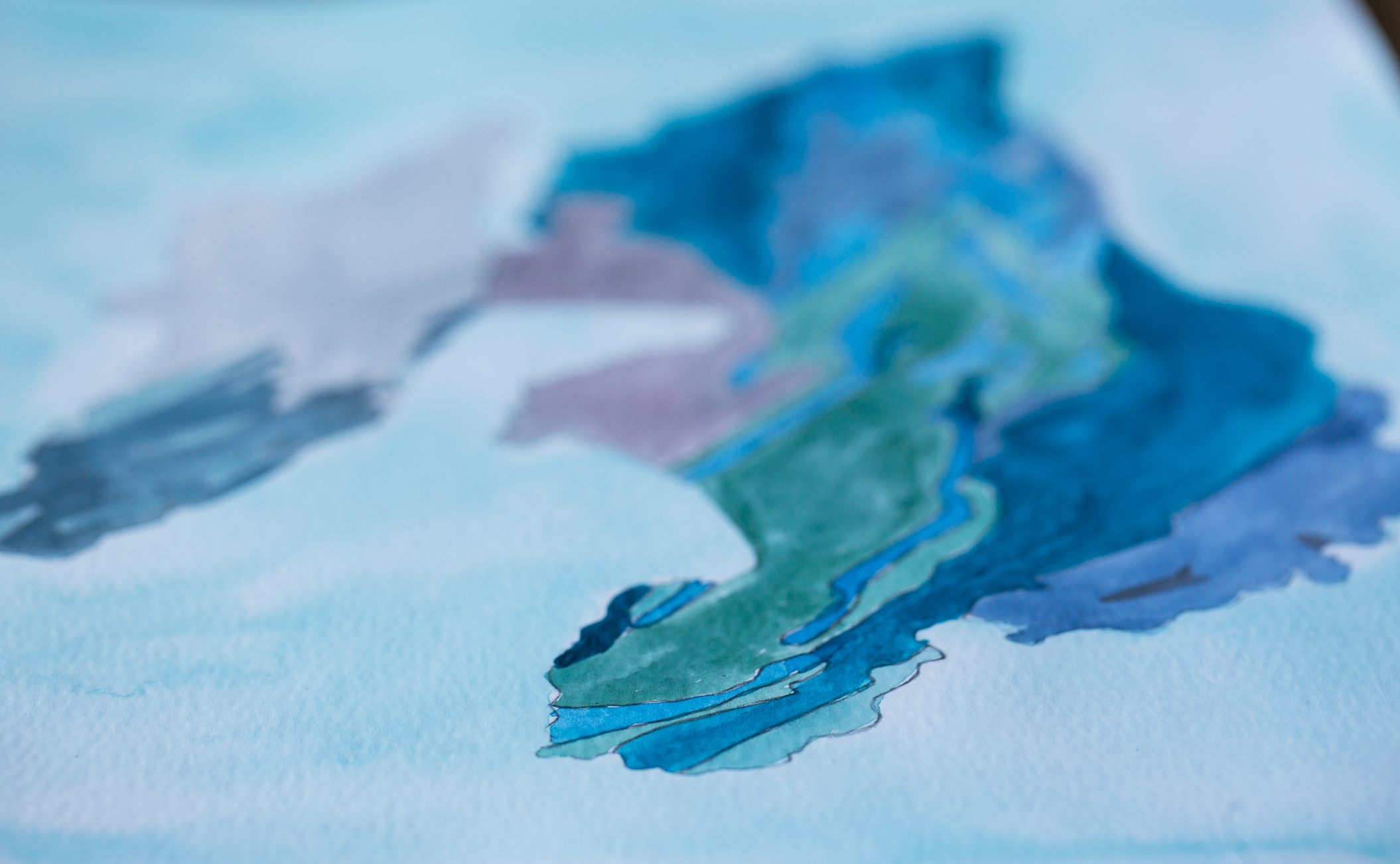
Perle Hotels Group have a commitment to sourcing interesting, ethical and local work to add character to their properties.
A series of textile island maps for each of the bedrooms in the beautifully renovated Marmalade Hotel, Portree, Isle of Skye.
A joint exhibition with painter Julie Arbuckle. Bringing together paintings and textile art through shared inspirations of Scotland’s geology and landscape.
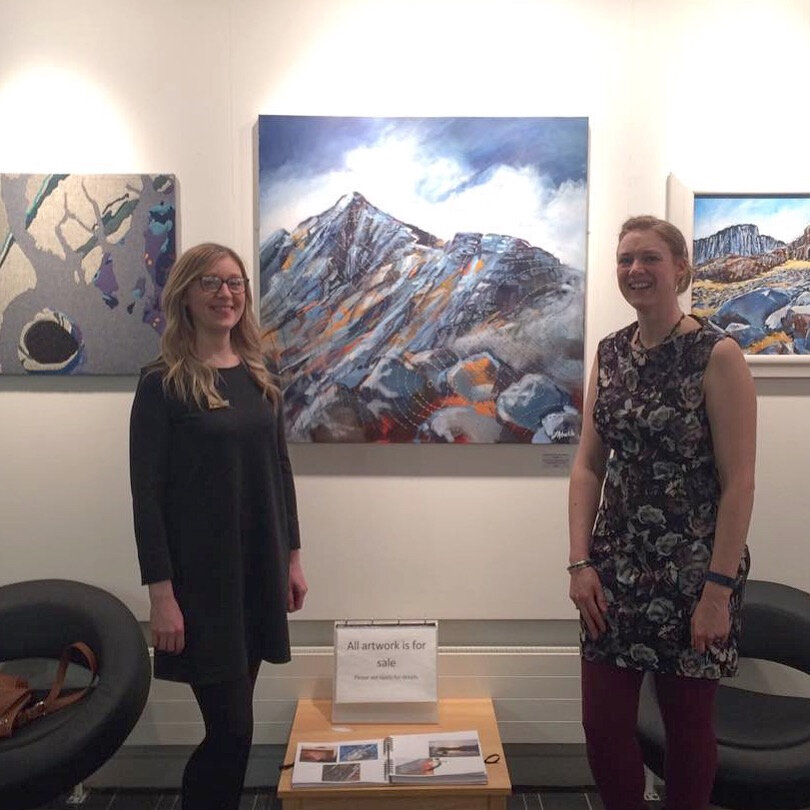
Exhibition Opening

aeolian blue
41 x 61cm sewn textiles
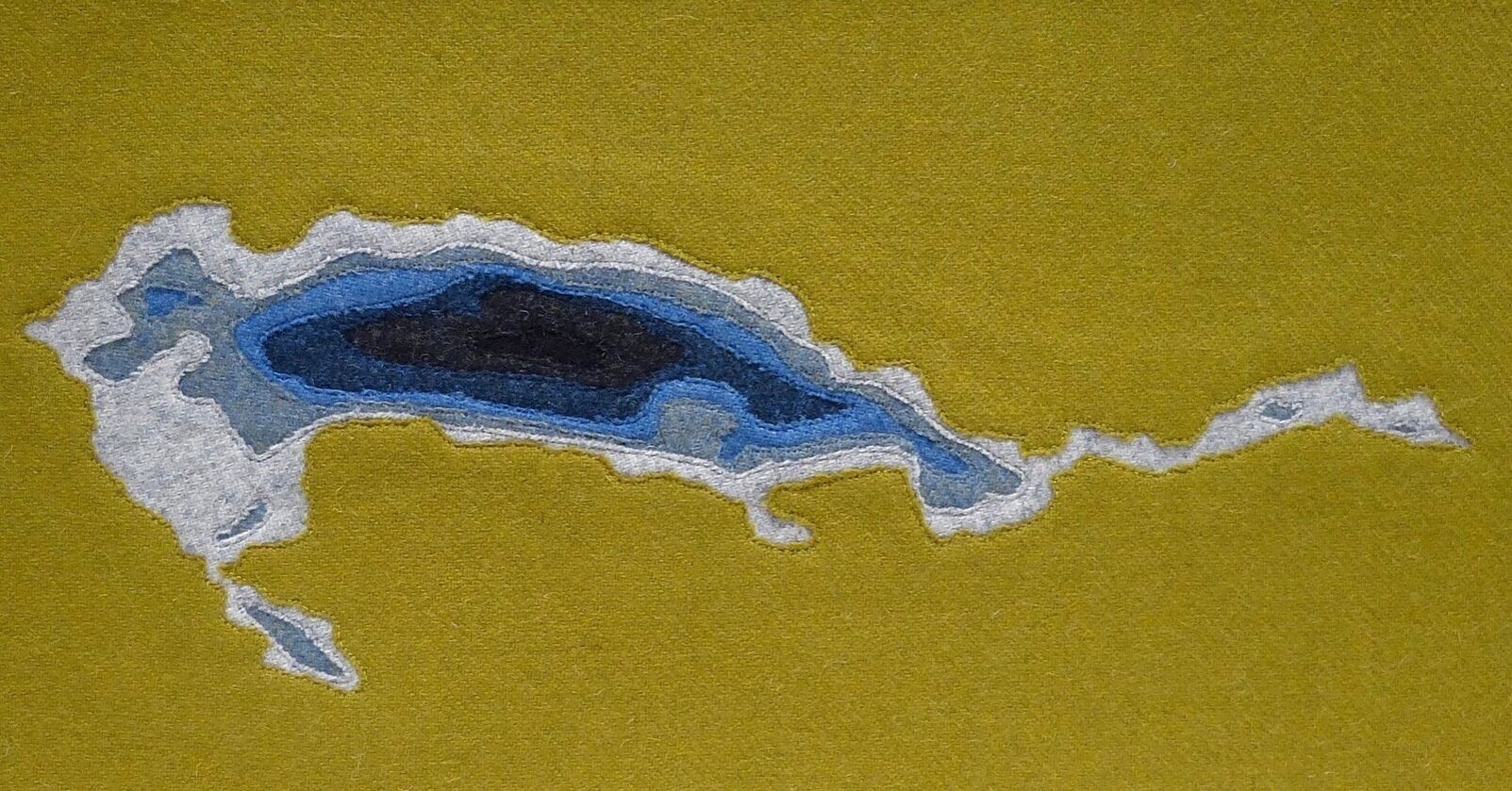
loch ard
28 x 61cm sewn textiles

highland boundary blues
61 x 61cm sewn textiles

hutton’s unconformity
25.5 x 41cm sewn textiles

goatfell
100 x 100cm oil on canvas with hand stitched contours

unconformity, blue
20.5 x 61cm sewn textiles

On the 24th June 2016 I made this textile sketch ‘Haud Oan’.
It was my immediate response to the results of the EU referendum which signalled the UK's exit from the EU and an image which, I found, summed up the feelings of many.
This little sketch made quite an impact, being shared widely on social media and even making it into a national newspaper.
In 2017 Professor Claire Squires, Director of the Stirling Centre for International Publishing and Communication at the University of Stirling, wrote a piece called ‘Haud Oan to Europe’, which was inspired by my artwork, for a book looking at the effects of the Brexit vote on the UK’s cultural sector and its agents.
(A photograph of the piece is published in the book “It’s not just the economy, stupid! Brexit and the Cultural Sector” published and distributed by the Centre for British Studies at the Humboldt University in Berlin and the Literary Field Kaleidoscope.)

In the weeks and months following I, along with the rest of the world, waited to hear what 'Brexit' means. Turns out Brexit means... well, Brexit. (great, glad that's been cleared up). I know I'm not alone in thinking Brexit means... everything I hoped it wouldn't, but feared it would be.
It seems to me that the signs of divergence between Scotland and the rest of the UK are only becoming more stark.
From the small sketch made on that frantic day, when we couldn’t quite believe what was happening, came the finished larger scale work “Haud Oan’. The title is open to interpretation, from initial shock and surprise, fear and unsettled feelings, to a rally cry or call for patience.
Maps usually provide factual information, the coloured map I referenced in the sketch provides factual information about how the majority of people in each area of the country voted, so how can you map a feeling? As I cut the intricate coast line of the British Isles from the rich green Harris Tweed, I considered this.
As I stitched the lengths of 'greige' wool through the coastline of the UK and pulled it back through into Westminster, a swirling vortex appeared. Warm, varied and vibrant colours of wool are stitched from Scotland. They come together, dynamic, reaching out, welcoming and haudin' oan.
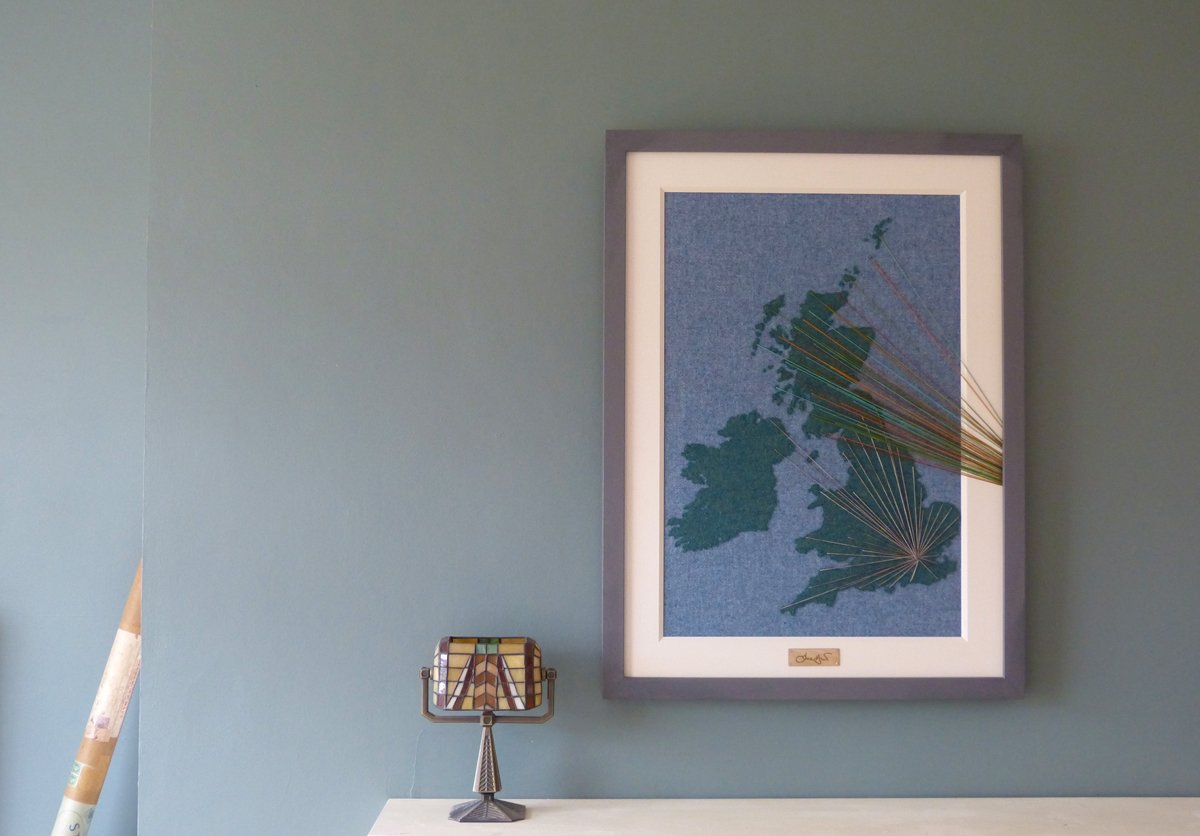
My partner, Sam Kilday, wrote the following poem to accompany the piece.
This land
Abound with shades and hues,
kaleidoscopic,
polychromatic.
But a tilt shift,
a definite rift.
Colour draining away.
Inward, dark,
and grey.
Look up without superiority.
Vibrance and warmth.
Welcoming. Diversity.
A depth of palette.
And richer for it.
Solo exhibition at The Watermill Gallery, Aberfeldy 2015.
New works based on the faults and formations that shape the land north of the Highland Boundary Fault.
Inspired by the extensive field work of 19th century geological mapmakers.

Exhibition opening

geology, assynt - zone of complication
63 x 46cm sewn textiles

section, ben more & moine thrust
20 x 42cm sewn textiles

contours, black cuillin
33.5 x 28.5cm sewn textiles

section, buachaille etive mor and beag
15 x 41cm sewn textiles

northern moine thrust belt
31 x 26.5cm sewn textiles

section, moine thrust
45 x 100cm sewn textiles

geology, skye - central complex
66 x 54.5cm sewn textiles

fieldwork at knockan crag, assynt - moine thrust exposure

stitching the geology of skye

walking in the black cuillin
Jane’s first solo exhibition, at The Watermill Gallery Aberfeldy 2013.
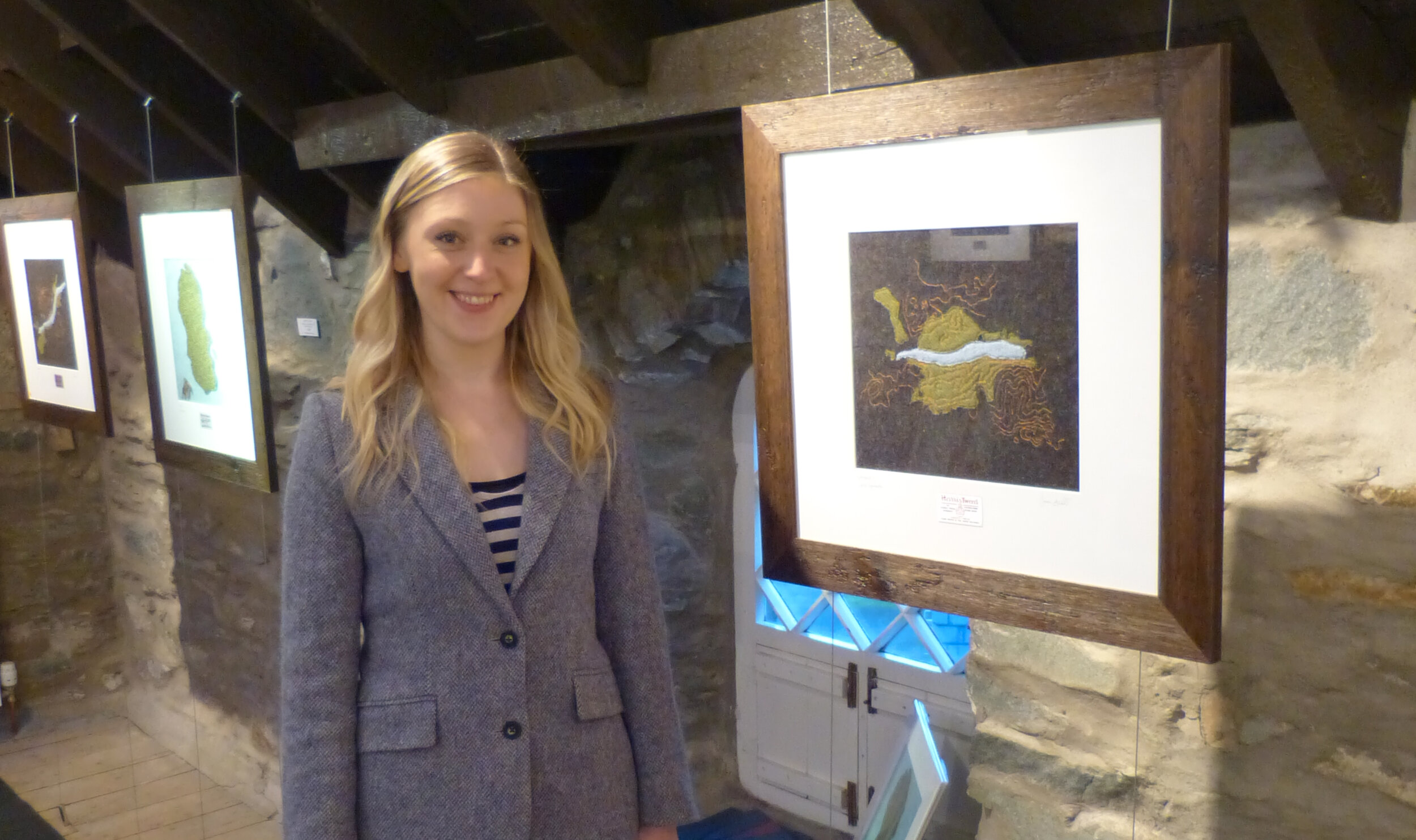

outer hebrides, machair
58 x 42cm sewn textiles

loch rannoch
30 x 27cm sewn textiles

bedrock geology, lewis & harris
30 x 27cm sewn textiles
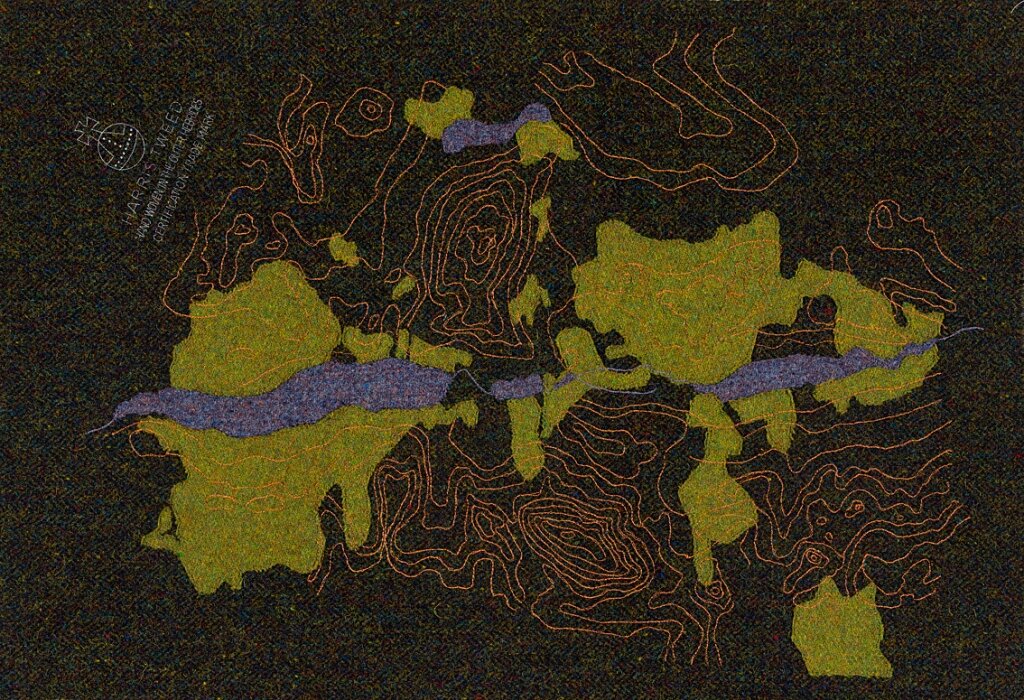
contours, queen’s view
47 x 70cm sewn textiles

bedrock geology, arran
30 x 27cm sewn textiles